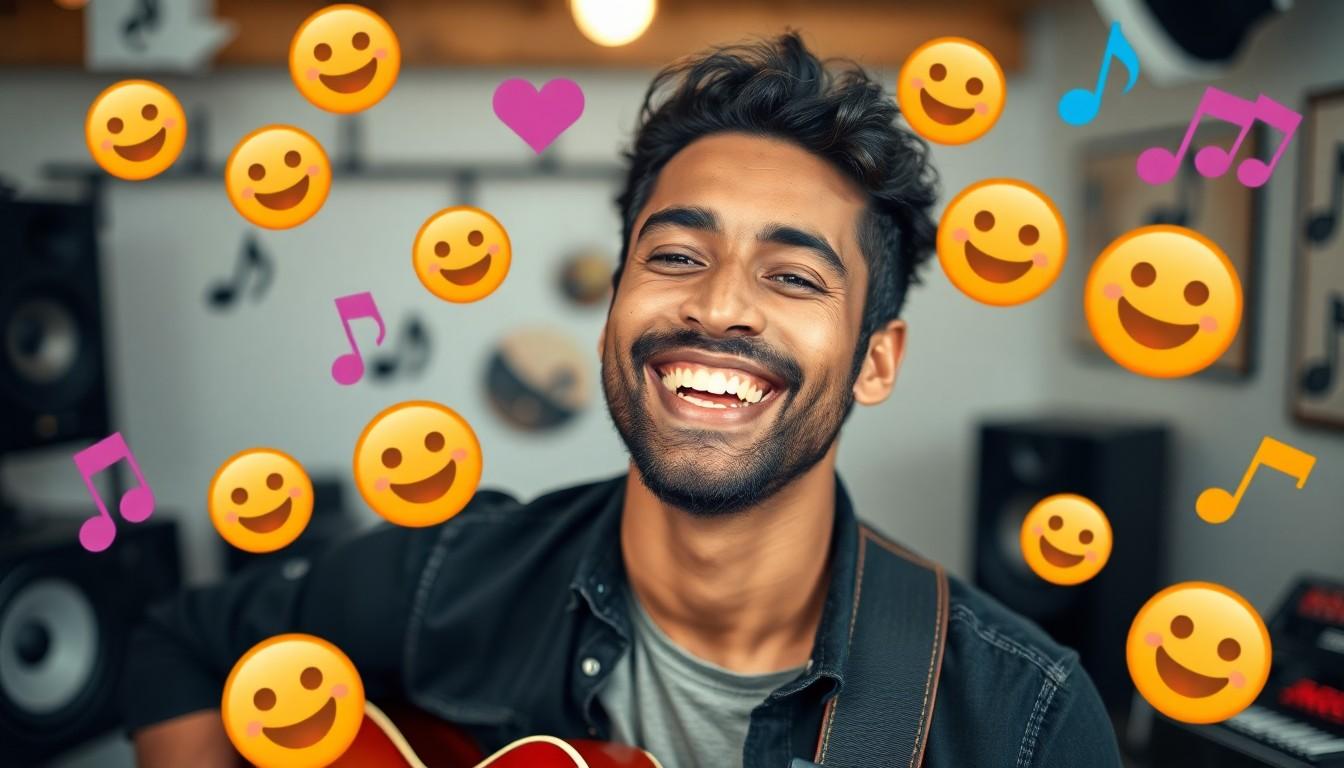In a world where words sometimes fail to capture emotions, emoji music steps in like a superhero in spandex. Who knew that a simple smiley face or a dancing lady could convey the rhythm of our hearts? This quirky blend of music and emojis is transforming how people express themselves, making playlists more vibrant and conversations more lively.
What Is Emoji Music?
Emoji music refers to the integration of emojis with music to enhance emotional expression. Users employ emojis to represent feelings, themes, or even specific songs within their playlists. For example, a heart emoji may signify love songs, while a dancing emoji may indicate party tracks. This creativity transforms playlists into interactive experiences.
Social media platforms frequently promote emoji music. Users share their playlists, using emojis to convey sentiments that words alone may not capture. Music streaming services allow emoji annotations for songs, enabling users to express their moods through captivating visuals. Moreover, this trend boosts listener engagement, making music discovery more enjoyable.
Artists increasingly embrace emoji music in their marketing strategies. By using emojis in song titles, album covers, or promotional materials, they attract attention and foster emotional connections with their audience. Emojis create an immediate visual language, allowing listeners to quickly grasp the vibe or essence of a track.
Collaborations between musicians and tech companies further emphasize emoji music’s allure. Innovative apps enable users to create their own emoji-based playlists and share them with friends. These platforms encourage exploration of new genres while adding a playful dimension to music sharing.
Overall, emoji music revolutionizes the way music is experienced and shared. Its ability to convey emotion succinctly captivates listeners, creating a unique blend of auditory and visual expression. Emojis serve as a powerful tool for communication, enriching the musical experience while encouraging deeper connections among users.
The Evolution Of Emoji Music

Emoji music has grown rapidly, shaping how people interact with music. The phenomenon combines visual and auditory elements, enhancing emotional reactions in listeners.
Origins Of Emojis In Music
Emojis first appeared in the late 1990s and gained popularity with smartphones. Early adopters used them in text messages to express emotions, leading to their integration in online communication. Musicians began to recognize potential, using emojis in song titles to encapsulate themes and evoke feelings quickly. This initial usage spurred interest in further exploring the relationship between emojis and music.
Growth Of Emoji Usage In Music
As social media platforms gained prominence, emojis became a fundamental part of online engagement. Artists embraced this trend, incorporating emojis into marketing materials, album promotions, and even song lyrics. Music streaming platforms followed suit, allowing listeners to annotate playlists with emojis, creating multi-dimensional experiences. This strategy not only captures emotions but also reflects current cultural trends, making music discovery more engaging. Over time, collaborations between tech companies and musicians continued to innovate, enhancing the appeal of emoji music in today’s digital landscape.
The Impact Of Emoji Music
Emoji music significantly enhances emotional expression in digital communication. This innovative approach integrates emojis seamlessly with music, allowing listeners to convey feelings and themes effectively.
Emotional Expression Through Emojis
Emojis serve as visual tools that amplify emotional connections within music. Smiley faces can depict joy while heart symbols express love. Artists frequently utilize them in song titles to resonate with listeners and provoke emotional responses. People often share playlists curated with emojis, effectively illustrating sentiments linked to each track. The combined effect of emojis and music fosters deeper connections among fans, transforming how emotions are communicated in the digital space.
Cultural Significance Of Emoji Music
Cultural relevance significantly shapes the popularity of emoji music. Many online communities embrace emojis as a universal language that transcends linguistic barriers. This trend reflects broader societal shifts toward visual communication, particularly among younger audiences. Emoji music also embodies contemporary culture, evolving in tandem with social media platforms and streaming services. Notably, collaborations between artists and tech companies drive innovation, ensuring emoji music remains a relevant and engaging part of the music landscape.
The Future Of Emoji Music
Emoji music is poised for exciting advancements as technology and creativity intersect in the music industry.
Emerging Trends In Emoji Integration
Innovative uses of emojis in music highlight the growing trend toward visual storytelling. Platforms like TikTok and Instagram inspire musicians to craft content that fuses emojis with audio snippets, enriching user engagement. This combination encourages artists to convey messages and emotions through visuals, enhancing overall audience experience. Increased emoji use in live performances introduces a way to amplify connection between performers and fans. As virtual reality continues to advance, immersive experiences that incorporate emoji music might soon emerge, inviting listeners to explore new dimensions of sound and emotion.
Predictions For Emoji Music’s Popularity
Experts predict continued growth for emoji music in the coming years. Enhanced digital platforms fueling this trend suggest that listeners will increasingly seek interactive experiences. Collaborations between tech developers and music creators are likely to expand, paving the way for innovative emoji applications in music. Additionally, the rise of Generation Z and their affinity for visual communication indicates that mainstream acceptance of emojis will strengthen. Upcoming developments may include more sophisticated integrations, gamified listening experiences, and personalized music recommendations based on emoji preferences, ensuring emoji music remains a vibrant element in the musical landscape.
Emoji Music
Emoji music is reshaping the way listeners connect with their favorite tunes. By merging visual elements with sound, it creates an immersive experience that resonates on multiple levels. This innovative approach not only enhances emotional expression but also fosters deeper connections among fans and artists alike.
As technology advances and social media continues to evolve, the possibilities for emoji music are limitless. The trend is likely to grow, driven by the desire for interactive and engaging experiences. With each new development, emoji music will remain a dynamic force in the industry, reflecting cultural shifts and the ever-changing landscape of music consumption.